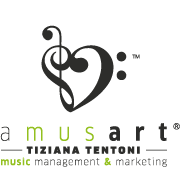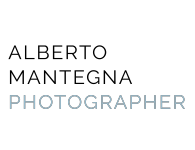WHY NOT?
My artistic-professional resume is not only the result of a long musical activity, but mostly the reflection of a restless, curious and mistrustful stance against over-specialization and drastic choices.
My school career – inclusive of piano, composition and conducting studies and diplomas, with a proper Master Class at the Hochschule für Musik und Theater in Munich – is enriched by a family-dictated Law degree, that has rarely been useful in my musical profession.
My artistic adventure was marked by the encounter with two great maestros: Andrea Mascagni, who steered most of my musical studies, and Luciano Berio, who enlightened my artistic vocation. Mascagni, my first composition teacher, conveyed me the inescapability of ethics and rigour, both essential to stand out in this artistic field abounding in suggestions as much as in delusions.
Berio, with whom I had a long artistic collaboration along with a beautiful friendship, aroused in me the pleasure of research, of intelligent innovation, an intimate vocation pointed to Beauty, without style and trend limits.
That’s why I mainly chose an existential quality rather than a life of success at all costs.
I’ve lived in the mountains for a long time, near Trento, where I was born and where I come to recover my mental and physical space.
I love reading, I love good food and I identify my spare time with the need of movement, the search of new spaces, impulses and feelings.
Musically, these needs turn into the constant need to read/study new and old works and partitions, to testify the challenging variety of genres instead of merely judging it.
I’ve combined my creative and concert activity with teaching and organizational work, which seemed necessary to a clearer definition of my personality.
I had numerous teaching experiences, starting from Piano and Harmony lessons, to those fateful Orchestra Exercises at the Conservatories in Trento, Florence and Venice.
Being into contact with young people, that often face unexplored musical territories, bore significant accomplishments: for instance my recent opera productions by the “Benedetto Marcello” Orchestra with Teatro La Fenice in Venice (Cinderella and The Bill of Marriage by Rossini, Che originali! by Simon Mayr, Giulietta e Romeo by Zingarelli, Der Schauspieldirektor by Mozart, Manfred by Schumann with Ottavia Piccolo, but also Malipiero, Chailly, Rieti, Britten, etc.), and a yearly symphonic concert festival, where we performed Beethoven’s complete piano concertos, alternating with American conductor John Axelrod.
My teaching career expanded abroad with some Master Classes held in Paris with the Orchestra of the Conservatoire National Supérieur and in Portugal with the Castelo Branco Academy Orchestra.
About ten years ago, I founded a Youth Orchestra in Trento named JFutura, where J was for Jeunesse, but also Jump, Joke… and we gave more than a hundred concerts in Italy and Europe, among which a Venice Biennale opening ceremony, a season called “MozarTiamo” in Rome as resident orchestra at Philharmonic Academy’s invitation, two seasons in Trento and Milan (with the support of Porsche Italy), performances at the Festival dei Due Mondi in Spoleto, the Festivals in Bertinoro and in Barga, as well as an important tour in Belgium culminating with a significant concert at the European Parliament.
Our orchestra also had an international foray – Jfutura International indeed – selecting musicians from France, Portugal, Czech Republic and Romania; this colossal undertaking came into being thanks to the support and broadmindedness of a great entrepreneur, Paola Stelzer, who made this dream come true and also established a theatre in her own dwelling (Teatro delle Garberie), a space for rehearsals, unusual chamber concerts, debates, European cultural events (Teatri Viaggianti). Unfortunately, short-sighted politicians and unaffordable costs brought this unique adventure to an end.
Since I’m a fervent upholder of the importance of cultural bridges, where local experiences and projects can – and must rise – to a national and, if possible, international level, I deemed it advisable, with the late friend and conductor Bernard Dekaise, to found an Italo-Belgian ensemble named “Nuovo Ensemble Europeo”, with which we gave more than fifty concerts in Belgium, Italy and France from 2000 on.
As for my organizational activity, I cannot refrain from mentioning the creation of the “Festival Musica ‘900” in Trento during the ‘80s, an event that, for almost twenty years, explored the XX century musical scene with a particular attention to “classical” music, without neglecting experimentation, from film scores, to jazz, rock, pop and performance in general.
I fondly remember Berio, Penderecki, Donatoni and Sciarrino’s participations, along with Morricone, Ortolani and Battiato’s, and many more artists who gave birth to exciting musical projects.
Still in Trento, I created the “Incontri con l’Europa” season, where some leading cultural figures (Kagel, Messinis, Dematté, and Sanguineti) met/clashed with musical events in an agreeably unusual way.
Then I also shared the artistic direction of “I Grandi Interpreti” Festival in Verona and Trento, and I created PocketOperaItalia, an association that promotes chamber musical theatre (Lego by Nicola Campogrande co-produced with Cidim in Verona; Façade by William Walton featuring London Voices, co-produced with the Venice “Biennale”; Il gatto con gli stivali by Massimo Priori at the Real Teatro di San Carlo in Naples; La Voix Humaine by Poulenc co-produced with the Teatro Donizetti in Bergamo).
I was artistic director of the conductors’ international competition entitled to Antonio Pedrotti for six editions, and I managed to export this event to the Kanagawa Orchestra in Tokyo, the Manhattan School in New York, the University of Montreal, the Palais des Beaux Arts in Bruxelles, the Music Academy in Prague, but chiefly to promote young talents that today are well-known conductors (Buribayev, Petrenko, Valčuha, Wilson, Lu Jia).
Last but not least, my artistic activity has been a constant interlacing of piano, conducting and compositional experiences. Even if I won some prizes, I preferred chamber music to a piano solo career, and I collaborated with several artists and formations: pianist Isabella Turso, with whom I recently began a four-handed compositional course; with my brother Diego, an oboist; with the Italian “Quintetto a fiati”; with the “Ensemble Musica ‘900”; with “I Cameristi”; with the “Solisti dell’Orchestra Toscana”.
I also collaborated with artists such as Enzo Porta, Kim Kriswell, and Pierre Amoyal. I would also like to mention the creation of “Quartetto ‘42” (Olivier Manoury on bandoneòn, Stefano Bianchini on double bass, and me on piano), a formation devoted to Argentine tango, to which I dedicated some pleasant compositions.
As a composer, I wrote several chamber pieces, for orchestra and for theatre, but I am especially fond of the transcription/reworking concept prompted by Berio’s colossal project concerning Monteverdi’s Orfeo rewriting/rereading that I made with Berry Olivero, Luca Francesconi, Ludovico Einaudi, and Francesco Pisanu. After the performances in Florence, Paris and Colmar during the ‘80s, in February I conducted an “ultimate” version edited by the Sacher Foundations in Basel within the “Philarmonie” season in Paris.
I fondly remember two other transcriptions: one, commissioned by the Madeira Classical Orchestra, is the reworking of de Falla’s Seven Spanish Folksongs (a tribute to Berio’s older transcription), and the other is de Falla’s Nana performed by the “Ex Novo Ensemble” and commissioned by Teatro La Fenice, in witness of my intimate and constant need to mould the past into the present.
My conducting activity filled and still fills most of my time: I conduct several orchestras and I take part in a number of national and international festivals, among which the “Maggio Musicale”, the “Autunno Veronese”, the “Autunno in Como”, the Biennale in Venice, Sofia, Reykjavík, Strasbourg, Tokyo.
I have always had the pleasure to work with famous artists as well as young talented soloists whom I love supporting at the beginning of a harder and harder career and, in confirmation of my constant movement through different musical genres and styles, with Elio from Elio e le Storie Tese, the SAT Choir, Virgilio Savona, Paolo Fresu, and Carlos Nunez, actors Foà, Piccolo, Schirinzi, Bergallo, Marchini, Marescotti, and Vergassola.
A steadfast road from Classicism up to the present day, with plenty of premiers that prove my will to renew the dialectic between past, present and future: on this point I fondly remember “Promenades Lyriques” at the Tourcoing Festival when, on the same day, I conducted six works (short but demanding, by Kagel, Cardi, Olivero, Nieder, Neuwirth and D’Amico), or the tribute to Nino Rota at the Festival in Barga (Play It Again, Nino! directed by Margot Galante Garrone) when I assembled and conducted some mostly-unknown pieces by Rota; the first Icelandic performance of Stravinsky’s Noces, the staging of Kagel’s Der Tribunwith Arnoldo Foà, Un Histroire du Soldatat the Festival in Ravenna with Ivano Marescotti’s voice (in Romagnol dialect), the Porsche car as solo instrument at the memorable opening concert of 2009 Venice Biennale dedicated to Futurism, accompanied by plane engines needed for the performance of Antheil’s Ballet Mécanique.
As for opera, I worked with directors such as Pierluigi Pizzi, Giuliano Montaldo, Tonino Conte, Paolo Valerio, Elena Barbalich, Patrick Guinand, and Jochen Sandig for the events of the “Maggio Musicale Fiorentino”, the Teatro La Fenice, the Biennale, Philharmonie in Paris, Monnaie in Bruxelles, for the Teatro in Liegi, for the Teatro Donizetti in Bergamo. But what I regard as fundamental in my complex career are my (sometimes provocative) repertoire choices that I have always tried to match to my sensitivity and my omnivorous curiosity: for example the last season with the JFutura Orchestra where, along with Beethoven’s complete concertos suggested by young musicians selected by Mapp (Martha Argerich Present Project), I decided to stage Poulenc’s Babarwith Simona Marchini’s voice, Elio in Gruber’s Frankenstein, Paolo Fresu (who also played some four-handed compositions I wrote with Isabella Turso); Cavalleria Rusticana at the Teatro Donizetti in Bergamo prefaced by a projection of Rapsodia Satanica with live music; and again La Fenice Orchestra engaged in a concert with projected films and live music by Saint Saens, Kagel, and Eissler.
I would also like to mention the “MozarTiamo” Festival at the Teatro Olimpico (Filarmonica Romana) in Rome, that every year included Mozart’s rarely performed works, premiered commissions dedicated to the Salzburg genius, concerts for solo instruments with winners of important international competitions; the performance of Hindemith’s complete Kammermusiken that I conducted in Naples; Virgilio Savona’s (from Quartetto Cetra) lovely Opera delle Filastrocche conducted both at the Maggio Fiorentino and at La Fenice.
All this reveals not only my need for constantly changing repertoire choices, but also my reluctance to conform to a market trend that, as well as supporting the most boring academic ritualism, undermines the pleasure of listening to live music.
Anyway, I will never forsake “classical” concerts, neither as a pianist or as a conductor, since I believe in a diversified and high-quality musical nourishment.
Download:
VISUAL IDENTITY PROJECT by AMUSART®
Concept & art direction: Tiziana Tentoni
Photo shooting: Alberto Mantegna
Website: Ecograph
www.amusart.com



Privacy Policy
